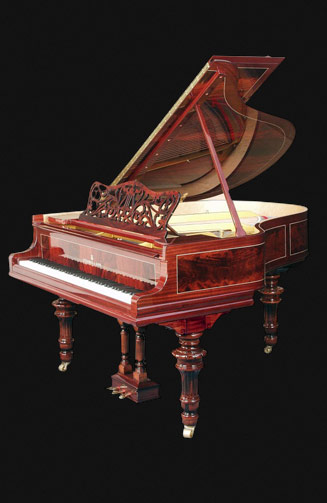

The perfect marriage of past and present, art and music, sight and sound.
It is believed that Bartolommeo Cristofori, a harpsichord maker from Padua, built the first piano sometime between 1709 and 1711. Over the next 150 years, European craftsmen – challenged and inspired by contemporary composers including Mozart, Bach, and Beethoven – worked tirelessly to perfect the instrument’s musical performance.
By 1870, the piano had evolved into a mature, technically superior instrument. At the same time, innovations to the piano began to take a decidedly artistic turn. With function firmly established, it was time to bring form into the picture – and thus the art case piano was born.Since the late 1800s, art case pianos – pianos whose outer cases are custom-designed to make an aesthetic statement – have been the showpieces of the piano world. Conceived as status symbols for the wealthy elite and passed down from generation to generation, art case pianos became a good investment as well, increasing in value year after year.
The Great Depression, followed by the devastating effects of WWII and the economic efficiencies of mass production combined to significantly decrease the manufacture of these beautiful instruments. Throughout the piano’s Golden Era (1830-1930), it is estimated that only 3,500 art cases were produced, making them rare treasures, indeed.
Ranging in styles, art case pianos are one-of-a-kind works of art that beautifully celebrate the marriage of past and present, art and music, sight and sound.








